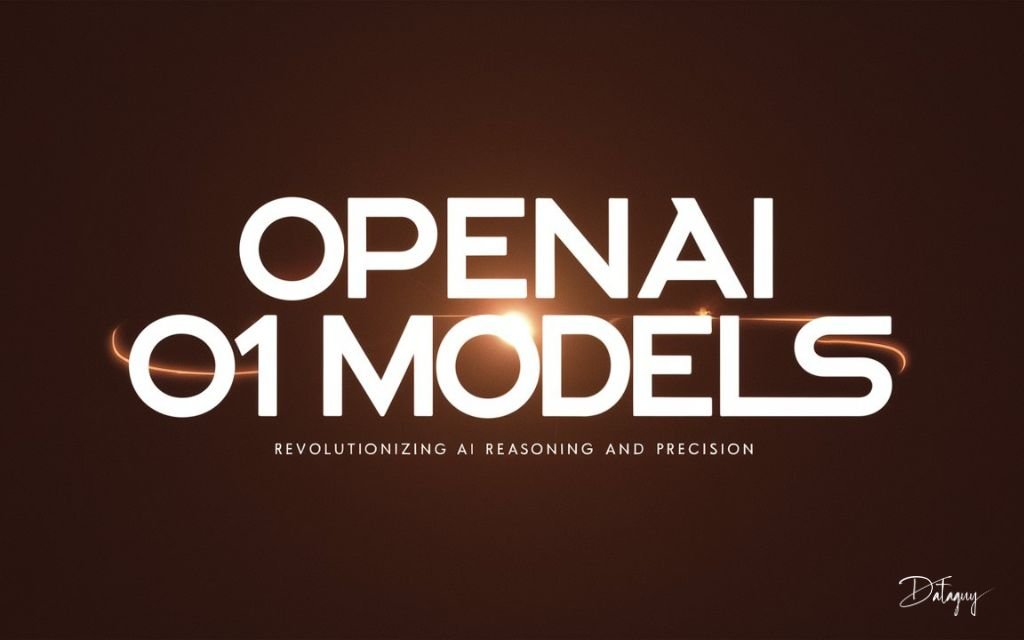Insights Index
ToggleOpenAI O1-Preview: The Next Generation of AI Reasoning Models
OpenAI has unveiled a new era of AI models with the OpenAI O1 series, focusing on reasoning through complex problems in fields like science, coding, and mathematics. Unlike previous models, O1 is trained to “think before it answers,” simulating a human-like thought process by generating a long chain of internal reasoning before producing a response.
This leap in cognitive capability allows O1 to tackle more intricate tasks, offering significant improvements in reasoning and problem-solving.
The O1-Preview model is now available through ChatGPT and API access, giving users a glimpse into this groundbreaking development. Let’s dive into what makes the O1 series stand out and how it’s transforming AI’s ability to reason and solve complex tasks.
How OpenAI O1 Thinks Before Responding
A significant innovation in the O1 series is the ability to reason through problems before generating responses. OpenAI trained these models using reinforcement learning, which teaches the model to spend more time reasoning, refining its thought process, and learning from mistakes. The model learns to:
- Hone its strategy: By thinking through different approaches.
- Recognize and fix mistakes: Just like humans do when problem-solving.
- Break down complex tasks: Simplifying tricky steps to solve them better.
This chain-of-thought reasoning allows the model to perform at levels that rival or exceed human experts in certain domains. For instance, when tasked with solving problems from the 2024 American Invitational Mathematics Examination (AIME), O1-preview averaged a 74% success rate, significantly surpassing GPT-4o’s 12%.
Key Performance Benchmarks: Outperforming GPT-4o and Human Experts
In extensive tests, O1-Preview outperformed previous models like GPT-4o across a wide range of benchmarks :
- Mathematics: On AIME, O1 averaged 83% with consensus voting among 64 samples and achieved an astonishing 93% success rate when re-ranking with a learned scoring function. This score placed it among the top 500 math students in the U.S.
- Coding: O1 ranked in the 89th percentile on competitive programming challenges hosted by Codeforces and scored 213 points in the 2024 International Olympiad in Informatics (IOI). With relaxed constraints, it exceeded the gold medal threshold in a simulated contest.
- Science: In the GPQA Diamond Benchmark, designed to test expertise in physics, chemistry, and biology, O1 surpassed human PhD experts, becoming the first AI model to do so.
O1’s ability to improve with more compute time both during training and testing makes it a powerful tool for researchers, developers, and professionals dealing with complex tasks. This approach of scaling reasoning rather than mere pre-training marks a substantial difference from traditional large language models (LLMs).
Revolutionizing Problem-Solving Across Fields
The enhanced reasoning capabilities of OpenAI O1 open new doors for AI-driven solutions in industries that demand precision and critical thinking:
- Healthcare Research: O1 can be used for complex data annotation tasks like sequencing cell data, allowing scientists to better understand biological processes.
- Physics and Engineering: O1 assists physicists by generating advanced mathematical formulas needed for quantum optics and other high-complexity applications.
- Software Development: Developers can use O1 to debug, build, and execute multi-step workflows, improving accuracy and efficiency in the coding process.
Safety and Alignment: A New Approach
As AI becomes more powerful, safety is a top priority for OpenAI. O1 incorporates a new safety training methodology, leveraging its reasoning capabilities to ensure better adherence to safety and alignment guidelines. This reasoning helps O1 understand and apply safety rules more effectively, making it harder to bypass these restrictions (known as “jailbreaking”).
In testing, O1 scored 84 (out of 100) on safety adherence tests, far exceeding GPT-4o’s score of 22.
OpenAI has also taken steps to collaborate with U.S. and U.K. AI Safety Institutes, granting them early access to research versions of O1 to ensure that safety is continually evaluated and improved. Rigorous red-teaming efforts and OpenAI’s Preparedness Framework are integral parts of ensuring that the O1 series aligns with societal safety standards.
The Cost-Effective OpenAI O1-Mini
For developers looking for a faster and cheaper solution, OpenAI has also released O1-mini, which is optimized for coding tasks. At 80% cheaper than O1-preview, this model is designed for applications that require strong reasoning capabilities without the need for broad world knowledge.
Developers can leverage O1-mini’s power to generate and debug complex code efficiently, making it a cost-effective solution for a wide range of coding tasks.
How to Access OpenAI O1
- ChatGPT Plus and Team users can access both O1-preview and O1-mini starting today, with weekly rate limits of 30 messages for O1-preview and 50 for O1-mini.
- ChatGPT Enterprise and Education users will gain access to the models next week.
- Developers in API usage tier 5 can prototype with both models today, with a rate limit of 20 requests per minute. Additional features like function calling and streaming are still under development, but these limitations will be addressed in future updates.
- OpenAI plans to bring O1-mini access to ChatGPT Free users soon.
What’s Next for OpenAI O1 Series
While O1 is in its early stages, OpenAI has big plans for the future. Regular model updates are expected, and new features like web browsing and file/image uploads will be integrated soon. These additions will make O1 an even more versatile tool for tackling everyday tasks and complex problems alike.
The O1 series is just the beginning—OpenAI plans to continue developing and releasing advanced models in both the GPT series and the O1 series, pushing the boundaries of what AI can achieve.

